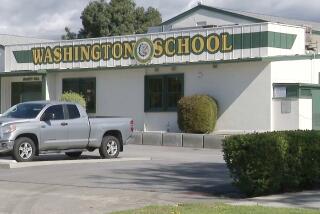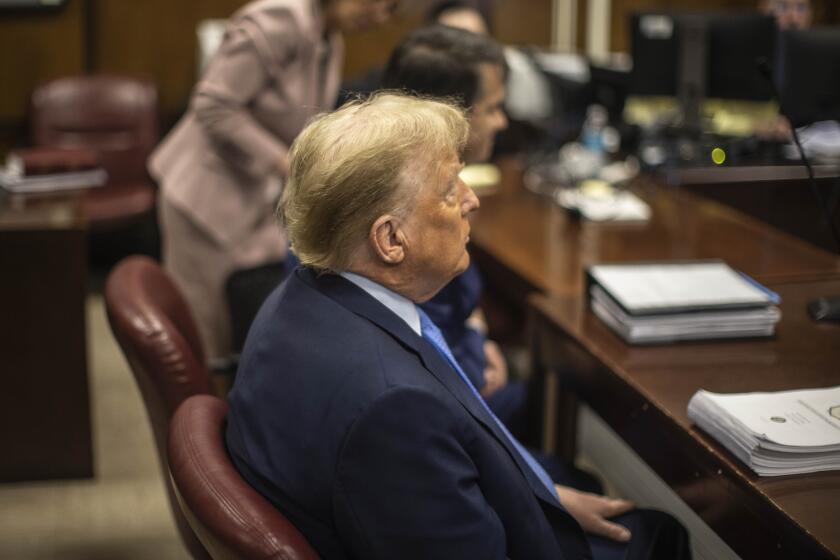Virginia Tech fatal shooting revives fears from 2007 massacre
Once more there were gunshots, a lockdown and a campus community trapped in offices and classrooms, waiting in fear.
Once more there was terror at Virginia Tech.
Less than five years after a deranged undergraduate carried out the bloodiest shooting by a lone gunman in U.S. history, the sprawling, picturesque campus was paralyzed Thursday by an incident that left a university police officer dead, as well as an unidentified man reported to have been the shooter.
The slain officer was identified as Deriek W. Crouse, 39, of Christiansburg, Va., a four-year veteran of the Virginia Tech Police Department and a father of five, the university said Thursday night.
Many details remained hazy. Police would not divulge a motive, nor would they confirm that the case was, as reported by several news outlets, a murder-suicide — even though the university told students and employees in the late afternoon that there was “no longer an active threat,” and a state police sergeant encouraged the media to “read between the lines” when asked whether the gunman was still at large.
Though the tally of dead did not approach the 32 killed in 2007 by Seung-hui Cho, the resurgence of fear and grief could not be measured in numbers.
“It’s unimaginably sad,” Andrew S. Becker, associate chairman of the Department of Foreign Languages and Literatures, who had left campus 30 minutes before the news of the shooting, said in an email. “Those who lost loved ones or friends on April 16, 2007, now have the scars opened, again. I feel for the families of the two we know have been killed.”
Thursday’s shooting occurred on the day that university officials, including the campus police chief, were in Washington appealing a $55,000 fine by the Department of Education for the school’s failure to provide a “timely warning” in the 2007 tragedy. Federal officials criticized the school for waiting more than two hours after students were shot in a dorm before sending out an email warning.
After the Cho shooting, however, the school took the lead among American universities in implementing a sophisticated emergency notification system. Praised Thursday by school officials as highly effective, it alerted faculty and students on phones, desktop computers and social media moments after the shots were fired.
“Gun shots reported — Coliseum parking lot,” it said. “Stay inside. Secure doors. Emergency personnel responding. Call 911 for help.”
It occurred on a campus sleepier than usual. Thursday was a “reading day,” the cram day before final exams, with no classes scheduled. Authorities said about 12:15 p.m., a campus officer was conducting a routine traffic stop in a parking lot near the Cassell Coliseum when a gunman approached the officer and fired at him in view of several witnesses.
The man fled across campus as officials put out a description: white male, gray sweat pants, gray hat with neon-green brim, maroon hoodie with backpack.
They had essentially described the campus everyman. But eventually a second body was found in another parking lot, and a weapon was recovered. The voluntary lockdown that had kept students and employees at their desks for hours — in many cases posting Facebook updates on their status — was lifted before nightfall.
At a news conference late Thursday afternoon, officials emphasized that the investigation was ongoing and that many of the details required further confirmation. Virginia State Police Sgt. Bob Carpentieri said it was “a possibility” that the crime was connected to a robbery the night before in nearby Radford, Va.
A number of students said they felt adequately warned by officials employing the new emergency response system. Freshman Bronwyn Foley, 18, of Salem, Va., was crossing the broad green Drillfield at the center of campus when sirens began blaring.
“I immediately received a text message that told me what was happening and to go back to my dorm,” she said.
Ryan Waddell, 21, a junior from Virginia Beach, Va., said that since 2007, students have been well aware of the safety procedures, which are explained to them during orientation.
It is nearly impossible, however, to ensure 100% safety at a large, open campus like Virginia Tech, with its enrollment of more than 30,000. This year, Virginia Atty. Gen. Kenneth Cuccinelli, in his appeal of the federal fine to an administrative judge, accused “federal bureaucrats” of “Monday-morning quarterbacking at its very worst” in criticizing the school’s response to the Cho shooting.
After the 2007 massacre, colleges and universities around the country improved their emergency notification systems and worked to speed up police reaction times to a potential shooter on campus, according to Christopher Blake, associate director of the International Assn. of Campus Law Enforcement Administrators.
Many universities put into place crime warnings that can go out via cellphones, emails, texts and other systems and bolstered the more traditional sirens and flashing signs and lights at intersections, Blake said.
In a statement Thursday, U.S. Education Secretary Arne Duncan said his department wanted to do “everything possible to help prevent future threats to campus safety, both in Virginia and across the country.”
Virginia Gov. Bob McDonnell said he was “deeply saddened,” and he praised Virginia Tech as a “university of great resolve” whose members would emerge “stronger and more united than ever before.”
But Becker, the languages professor, gave a hint of a discordant note that could hover over campus for the near future.
“My wife says that the continuous posts of Facebook of ‘I’m ok’ are marvelous,” he wrote in another email as the incident unfolded.
But they were also a reminder, he said, “that someone is not ok.”
stephen.ceasar@ latimes.com
Times staff writers Richard Simon in Washington and Larry Gordon and Rene Lynch in Los Angeles contributed to this report.
More to Read
Get the L.A. Times Politics newsletter
Deeply reported insights into legislation, politics and policy from Sacramento, Washington and beyond. In your inbox three times per week.
You may occasionally receive promotional content from the Los Angeles Times.






